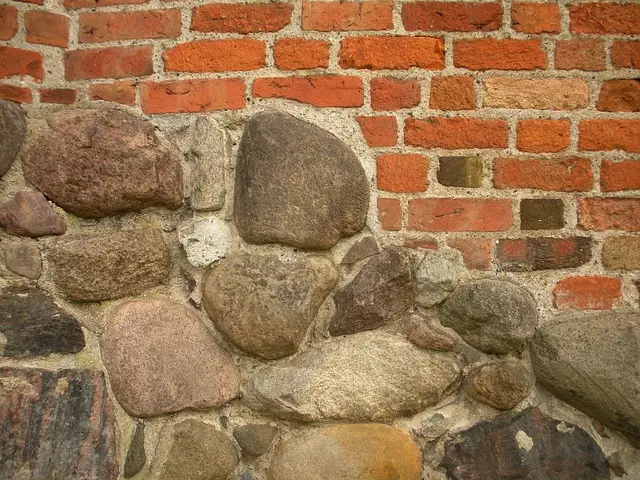Residential foundation repair is crucial for maintaining a safe, stable home. Over time, factors like soil settling, poor construction, or natural disasters can compromise the foundation. Early signs of trouble, such as cracks, uneven floors, and water seepage, should be addressed promptly to prevent structural damage. Common repair methods include heave repairs and piering/underpinning for additional support. Regular inspections (including advanced tech like GPR) detect issues early, saving costs and prolonging the home's lifespan. Costs vary based on damage severity and repair techniques, emphasizing the importance of proactive maintenance and transparent contractor consultations.
A strong structural foundation is the backbone of any home, yet it’s often overlooked until issues arise. Understanding residential foundation repair begins with recognizing the importance of regular structural foundation inspections. This comprehensive guide delves into everything homeowners need to know about these crucial assessments, from identifying common signs of foundation problems to exploring advanced inspection technologies and cost considerations. By arming yourself with knowledge, you can ensure your home’s enduring stability and avoid costly repairs down the line.
Understanding Residential Foundation Repair: The Basics

Residential foundation repair is a crucial aspect of maintaining a safe and stable home. The foundation serves as the structural backbone, supporting the entire building. Over time, various factors like settling soil, faulty construction, or natural disasters can compromise this critical component. Identifying signs of trouble early on is key to minimizing damage and preventing more extensive (and costly) repairs down the line.
There are several common types of residential foundation repair, each addressing specific issues. For example, heave repair addresses uneven floors caused by soil expansion, while piering and underpinning solutions strengthen the foundation by installing additional support beams. Understanding these basic concepts is essential for homeowners to communicate effectively with professionals and make informed decisions regarding their home’s long-term health.
Importance of Structural Foundation Inspection for Homes

Structural foundation inspection is a critical aspect of home maintenance that often goes overlooked. It’s akin to checking the engine of a car for any signs of wear and tear – only, in this case, it’s your home’s structural integrity we’re talking about. A comprehensive inspection can reveal potential issues like cracks in the foundation, uneven floors, or bowing walls, all of which could indicate more serious problems beneath the surface. Early detection through regular inspections is key to preventing costly residential foundation repair down the line.
Neglecting these checks can lead to significant structural damage over time. Water intrusion, soil settlement, and termite infestations are just a few factors that can compromise a home’s foundation. By investing in routine foundation inspections, homeowners can safeguard their investment, ensuring the longevity and safety of their residences. This proactive approach not only saves money but also provides peace of mind, knowing your home stands strong against potential structural failures.
Common Signs Indicating Foundation Issues

Many foundation issues in residential properties go unnoticed until they’ve progressed to severe stages, making early detection crucial for effective and affordable residential foundation repair. Some common signs that indicate potential problems include visible cracks on walls or floors, uneven or slanted floors, doors or windows that stick or fail to close properly, and water seepage in the basement or crawl space.
These symptoms could point to various issues like settling, shifting soil, poor construction, or moisture intrusion. Timely attention is vital as foundation problems can compromise structural integrity and lead to costly repairs. Regular visual inspections and addressing any warning signs promptly are key to preserving the longevity of a home’s foundation.
Types of Foundation Problems to Look Out For

When conducting a structural foundation inspection for residential properties, there are several common issues to keep an eye out for. These problems can range from minor cracks in the walls to more significant structural shifts that compromise the integrity of the building. One of the most visible signs is vertical or horizontal cracks in the foundation walls, floors, or ceilings. These cracks, often caused by settlement or movement of the soil beneath, can indicate underlying issues with the foundation’s stability. Another concern is uneven or sloping floors, which may result from differential settling or more severe structural damage.
Heaved foundations, where parts of the structure lift from the ground, and bowing or leaning walls are additional red flags for potential problems. These issues often stem from poor soil conditions, inadequate drainage, or improper construction techniques. Identifying these foundation problems early is crucial for preventing further damage and ensuring the safety and longevity of the residential property, thereby underscoring the importance of regular inspections and prompt residential foundation repair when needed.
The Inspection Process: What to Expect

During a structural foundation inspection, professionals thoroughly examine every aspect of your home’s basement or crawl space. They start by assessing visible signs of damage, cracks in walls and floors, or uneven floors. This initial visual evaluation helps them pinpoint potential problem areas. Then, they employ advanced techniques such as moisture meters to detect humidity levels, which can indicate foundation issues like leaks or settlement. Next, they use tools like ground radar or cameras to inspect the depth and integrity of your foundation’s structural elements, like beams and footings. This comprehensive approach ensures accurate identification of any needed repairs, focusing on key areas like residential foundation repair.
Non-Invasive vs Invasive Foundation Inspection Techniques

When it comes to inspecting structural foundations, there are two primary approaches: non-invasive and invasive techniques. Non-invasive methods, like ground-penetrating radar (GPR) and electromagnetic pulse induction (EPI), offer a modern, efficient way to assess foundation health without disturbing the surface or causing damage. These technologies send signals into the soil and measure the reflections, revealing potential issues like cracks, voids, or water intrusion. This approach is particularly beneficial for residential foundation repair as it’s less disruptive, faster, and often more cost-effective than invasive methods.
In contrast, invasive techniques involve physical penetration of the ground to gain direct access to the foundation. This includes methods like soil sampling, boring, and direct observation. While providing detailed insights, these techniques can cause disruption, damage, and increased costs due to clean-up and restoration efforts. For homeowners concerned about residential foundation repair, non-invasive options are often preferred as they offer a comprehensive assessment while minimizing interference with daily activities and property value.
Advanced Technology in Foundation Repair Assessment

In today’s digital era, advanced technology has revolutionized the field of residential foundation repair assessment. Professionals now utilize sophisticated tools and techniques to accurately diagnose structural issues. For instance, ground-penetrating radar (GPR) can penetrate the soil and concrete to detect anomalies beneath the surface, providing valuable insights into potential problems. Additionally, drone technology offers a bird’s-eye view, allowing inspectors to capture detailed images and data from hard-to-reach areas.
These modern approaches enhance precision and efficiency in foundation repair assessments. By leveraging GPR and drones, experts can identify cracks, heaves, and settlement patterns more effectively. Such technology not only streamlines the inspection process but also empowers homeowners with accurate information, enabling them to make informed decisions about necessary repairs for their residential foundations.
Cost Considerations for Foundation Inspections and Repairs

When considering a structural foundation inspection, one of the primary concerns for homeowners is often the associated costs. The price of a residential foundation repair can vary greatly depending on several factors. Initially, a basic inspection to identify potential issues might be relatively affordable, ranging from $300 to $500. However, when it comes to actual repairs, the expenses can significantly increase. Factors influencing the cost include the type and severity of damage, the size and age of the property, local labor rates, and the specific techniques or materials used for repair.
For instance, a simple crack in a foundation wall might require cosmetic repairs costing a few hundred dollars. In contrast, extensive damage could lead to complex solutions like underpinning or piering, which can run into thousands of dollars. It’s important to remember that proactive inspection and early detection of issues often make repairs less costly over time. Homeowners should budget for potential outlay and consult with reputable contractors who can provide transparent estimates tailored to their specific needs, ensuring a fair and effective Residential Foundation Repair process.
Maintenance Tips to Prevent Future Foundation Damage

Regular maintenance is key to preventing future foundation damage, a crucial aspect of any residential foundation repair strategy. One of the most important steps is checking for water leaks and addressing them promptly. Moisture can lead to significant structural issues over time, so ensuring all pipes are well-insulated and fixing any leaks in the roof or walls is essential. Additionally, inspecting the foundation for cracks, especially after extreme weather events, is vital. Even small cracks can indicate potential problems and should be filled with a suitable sealant to prevent further damage.
Another tip involves keeping the area around the foundation clear of debris and plants. Overgrown vegetation can cause ground settlement issues, leading to uneven foundations. Regularly clearing away leaves, branches, and other debris allows for better drainage and reduces the risk of water pooling near the structure. Lastly, monitoring the levels of underground moisture and soil movement can provide valuable insights into a home’s foundation health, enabling proactive measures to safeguard against future residential foundation repair needs.
